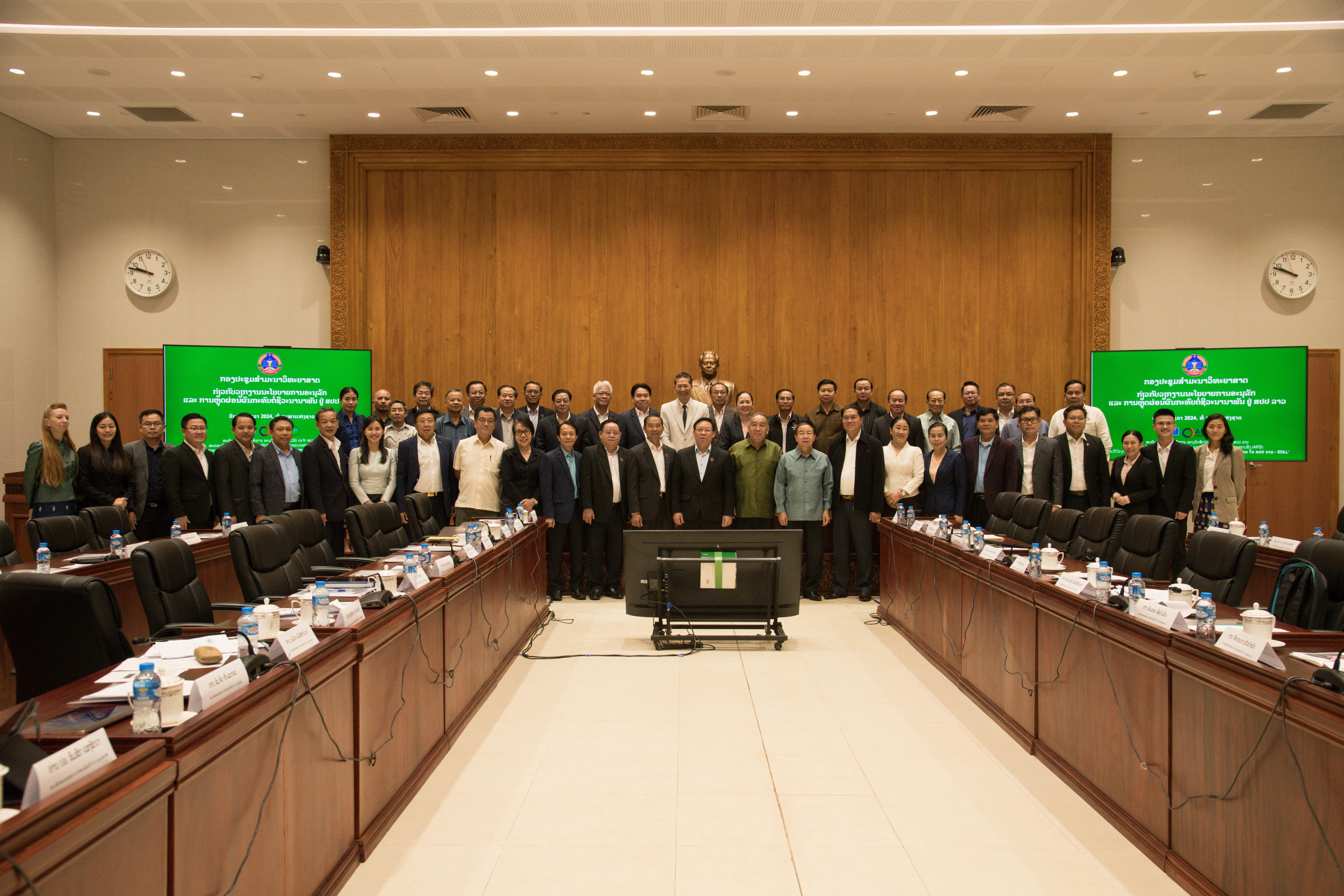The Ministry of Agriculture and Forestry and the Ministry of Natural Resources and Environment, in cooperation with the Wildlife Conservation Society, presented the biodiversity conservation status and mitigation policies for Lao PDR’s forests and wildlife, as well as Multilateral Environmental Agreements, to National Assembly Members.
This high-level meeting was chaired by H.E. Mme. Pingkham Lasasimma, President of the Economic, Technology, and Environment Committee of the National Assembly of Lao PDR and followed by her Vice President H.E. Mr. Maniso Xamounty and Dr Santi Saypanya, Country Director of WCS Lao PDR Program The meeting took place at the National Assembly of Lao PDR in Vientiane, , with the aim of enhancing Parliament members’ understanding of Laos’ forests and wildlife and on mitigation measures on biodiversity impacts caused by development or investment projects.

Lao PDR is one of the most biodiverse countries in Southeast Asia, well-known for its rich biodiversity and endemic wildlife species. With 26 National Protected Areas and seven declared as ‘National Parks’, a category of higher protection, Lao PDR faces numerous challenges in the sustainable management of biodiversity and natural resource use. Main threats to conservation include climate change, illegal wildlife trade, hunting, and poaching coupled with high rates of deforestation, causing fragmentation and loss of habitats.
Mme. Pingkham Lasasimma, remarked: "In recent years, Lao PDR has experienced rapid economic growth marked by increased investments in large infrastructure projects such as railways, roads and mining industries, alongside the expansion of natural resources use in areas such as hydropower, agriculture and forestry. These developments have impacted land use and forest cover, converting significant portions of forested land. Recognizing the value of these natural resources, Lao PDR has committed to a path of sustainable development through its Green Growth Strategy. We have enacted policies and laws—including the National Green Growth Strategy, Land Law, Forest Law, Wildlife Law, Aquatic Animal and Fishery Law, and a robust framework for Environmental Impact Assessment and Strategic Environmental Assessment. These policies serve as essential tools to protect our natural resources, mitigate investment impacts, conserve biodiversity, and safeguard ecosystem services for future generations."
The meeting focused on three key objectives:
- Provide an in-depth overview of Lao PDR’s forest systems, and international conservation frameworks, including the Convention on International Trade in Endangered Species (CITES) and its significance for Lao PDR, the Convention on Biological Diversity (CBD), the Ramsar Convention, and the Lao PDR Wildlife List.
- Enhance Awareness and Understanding on Integrated Landscape Management, a comprehensive framework that addresses conservation and sustainable land use by considering the interconnectedness of ecosystems, communities, and economic needs within protected area and wetland landscapes aiming at achieving sustainable development goals.
- Enhance environmental assessments and impact mitigation in investment and development projects, emphasizing the adoption of the ‘mitigation hierarchy’ to prevent and mitigate adverse impacts on biodiversity, aiming to engage parliamentary members in recognizing the necessity of incorporating environmental considerations into project planning and implementation, ensuring that sustainable development aligns with our national and international conservation commitments. Through this dialogue, we seek to foster responsible investment practices that contribute to the protection of our natural heritage while promoting economic growth.
Ms. Manoly Sisavanh, Deputy Country Director of the Wildlife Conservation Society’s Lao PDR Program, presented the Mitigation Hierarchy—a key approach to harmonizing conservation and development.
“Our discussion emphasized both the value of this approach and the challenges Laos faces, such as building technical capacity, enhancing coordination among government bodies, and strengthening data access to support informed decision-making," she noted.
"It was inspiring to see the interest and thoughtful engagement from National Assembly members, who hold the vital responsibility of overseeing the implementation of laws, socio-economic plans, and national projects. Their commitment to sustainable development is essential to ensuring that Laos’ growth aligns with environmental protection and social equity.
Together, we can work toward a future where development not only preserves but also supports the rich biodiversity of our country, benefitting all its people sustainably.”
The meeting was an opportunity for participants to share knowledge, experience, and best practices in biodiversity conservation in line with Lao PDR’s sustainable economic development for the coming years.
The high-level meeting, supported by WCS Lao PDR and the ‘Ecosystem Conservation through Integrated Landscape management in Lao PDR (ECILL) project’ financed by the Agence Française de Développement and the European Union, was attended by more than 60 people from the National Assembly, the National Assembly’s Economic, Environment, and Technology Committee the Ministry of Agriculture and Forestry, the Ministry of Natural Resources and Environment, and the Wildlife Conservation Society.